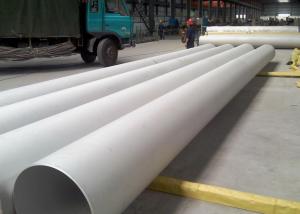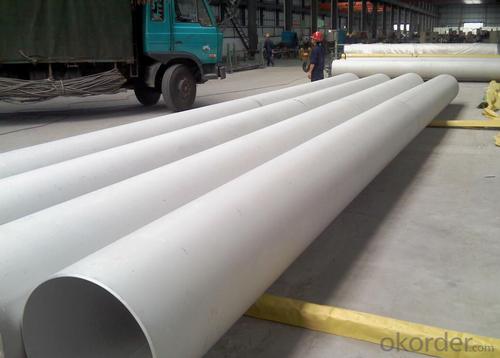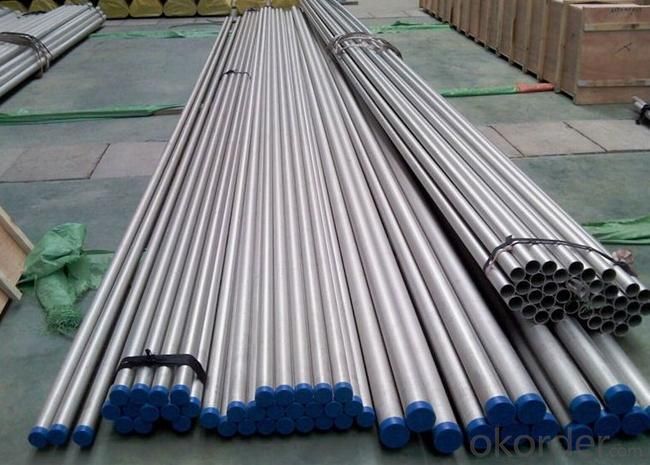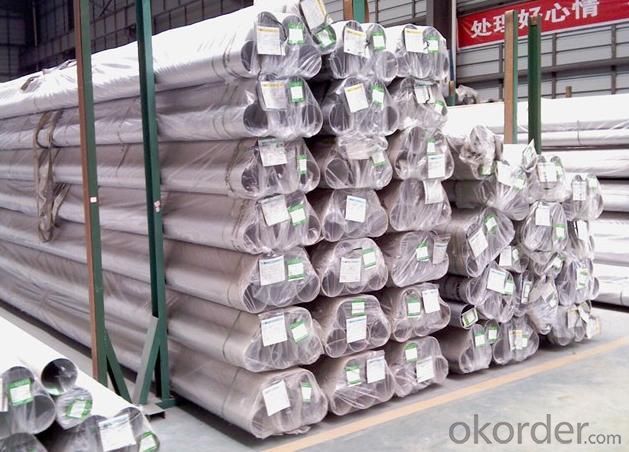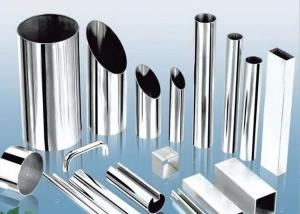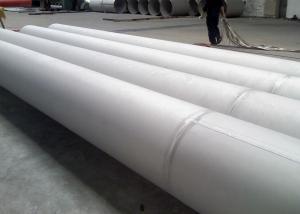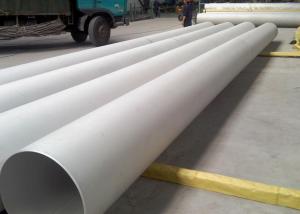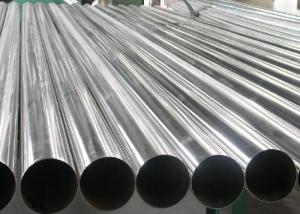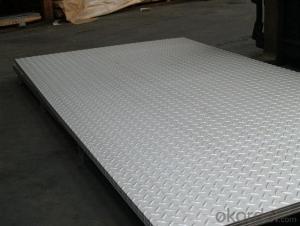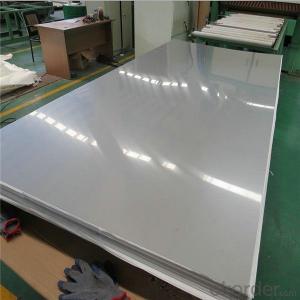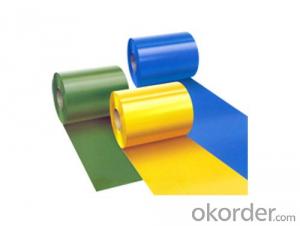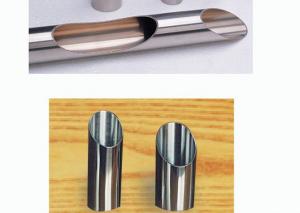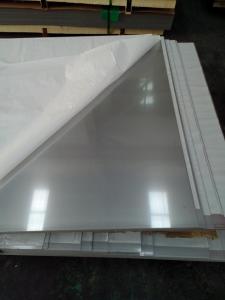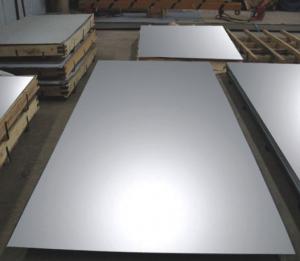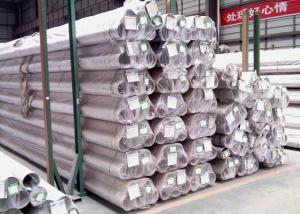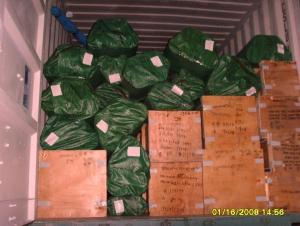321 Stainless Steel Welded Pipe
- Loading Port:
- China Main Port
- Payment Terms:
- TT or LC
- Min Order Qty:
- 5 Tons m.t.
- Supply Capability:
- -
OKorder Service Pledge
OKorder Financial Service
You Might Also Like
Stainless Steel Welded Pipe
APPLICATION:
Industrial Fluid Conveying
Boiler,Heat Exchanger and condenser
Sanitary and Thin-wall water pipe
Oil and Gas transportation etc.
Standards :
ASTM A249/A269/A270/A312/A358/A788/A789/A790
DIN/EN 10217/DIN 11850
JIS G3459,GB/T 12771 etc.
SIZES:
|
OUTSIDE DIAMETER |
OD |
WALL THICKNESS | |||
|
SCH 5S |
SCH 10S |
SCH 40S | |||
|
N.B |
NPS |
mm |
mm |
mm |
mm |
|
8 |
1/4' |
13.72 |
- |
- |
2.24 |
|
10 |
3/8' |
17.15 |
- |
- |
2.31 |
|
15 |
1/2' |
21.34 |
1.65 |
2.11 |
2.77 |
|
20 |
3/4' |
26.67 |
1.65 |
2.11 |
2.87 |
|
25 |
1' |
33.4 |
1.65 |
2.77 |
3.38 |
|
32 |
1-1/4' |
42.16 |
1.65 |
2.77 |
3.56 |
|
40 |
1-1/2' |
48.26 |
1.65 |
2.77 |
3.68 |
|
50 |
2' |
60.33 |
1.65 |
2.77 |
3.91 |
|
65 |
2-1/2' |
73.03 |
2.11 |
3.05 |
5.16 |
|
80 |
3' |
88.9 |
2.11 |
3.05 |
5.49 |
|
90 |
3-1/2' |
101.6 |
2.11 |
3.05 |
5.74 |
|
100 |
4' |
114.3 |
2.11 |
3.05 |
6.02 |
|
125 |
5' |
141.3 |
2.77 |
3.4 |
6.55 |
|
150 |
6' |
168.28 |
2.77 |
3.4 |
7.11 |
|
200 |
8' |
219.08 |
2.77 |
3.76 |
8.18 |
|
250 |
10' |
273.05 |
3.4 |
4.19 |
9.27 |
|
300 |
12' |
323.85 |
3.96 |
4.57 |
9.52 |
|
350 |
14' |
355.6 |
3.96 |
4.78 |
11.13 |
|
400 |
16' |
406.4 |
4.19 |
4.78 |
12.7 |
|
450 |
18' |
457.2 |
4.19 |
4.78 |
14.27 |
|
500 |
20' |
508 |
4.78 |
5.54 |
15.09 |
|
550 |
22' |
558.8 |
4.78 |
5.54 |
15.09 |
|
600 |
24' |
609.6 |
5.54 |
6.35 |
17.48 |
|
650 |
26' |
660.4 |
5.54 |
7.92 |
17.48 |
|
700 |
28' |
711.2 |
5.54 |
7.92 |
17.48 |
|
750 |
30' |
762 |
6.35 |
7.92 |
17.48 |
|
800 |
32' |
812.8 |
- |
7.9 |
17.48 |
|
850 |
34 |
863.6 |
- |
7.92 |
17.48 |
|
900 |
36' |
914.4 |
- |
7.92 |
19.05 |
|
1000 |
40' |
1016 |
- |
9.53 |
- |
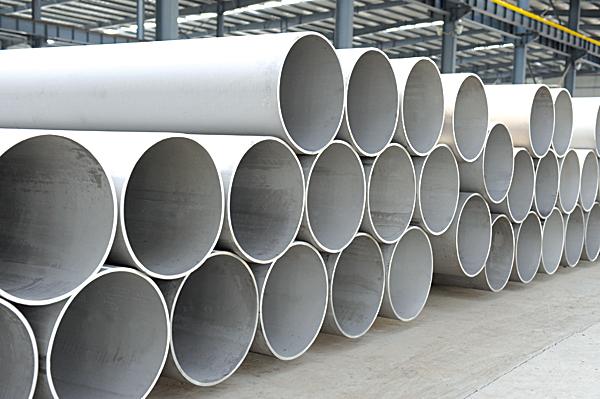
- Q: What is the weight of a stainless steel sheet?
- The weight of a stainless steel sheet depends on its dimensions (length, width, and thickness).
- Q: Can stainless steel sheets be etched or engraved?
- Indeed, it is possible to etch or engrave stainless steel sheets. Etching and engraving serve as widely employed techniques for crafting designs, patterns, and text onto stainless steel surfaces. These methodologies entail the elimination of a fine layer of the metal to form the desired design. Etching may be accomplished through the utilization of chemicals or the use of a laser, while engraving is commonly executed with a mechanical tool or laser. This process of etching or engraving can yield intricate and elaborate designs on stainless steel sheets, rendering them suitable for a broad array of applications, including signage, decorative panels, nameplates, and more.
- Q: What is the maximum size available for stainless steel sheets?
- The maximum size available for stainless steel sheets depends on several factors, including the manufacturing capabilities of the supplier and the specific requirements of the customer. Stainless steel sheets are typically available in standard sizes, which can vary depending on the thickness and grade of the stainless steel. In general, stainless steel sheets can be found in sizes ranging from 4 feet by 8 feet (1220mm x 2440mm) to larger sizes such as 5 feet by 10 feet (1524mm x 3048mm). However, it is also possible to find custom sizes or oversized sheets that exceed these dimensions, especially for industrial or specialized applications. It is important to note that larger sizes may come with additional challenges, such as increased weight and handling difficulties. Additionally, the availability of specific sizes may vary among suppliers, so it is recommended to consult with a stainless steel sheet supplier or manufacturer for the exact maximum size options they offer.
- Q: How do you install stainless steel sheets?
- To install stainless steel sheets, you will need a few basic tools and follow these steps: 1. Measure and prepare: Start by measuring the area where you want to install the stainless steel sheets. Ensure that the surface is clean, dry, and free from any dust or debris. If needed, sand down any rough spots or imperfections on the surface. 2. Cut the sheets: Using a metal cutting tool like a circular saw or a jigsaw with a metal cutting blade, cut the stainless steel sheets to the desired size and shape. Make sure to wear safety goggles and gloves while cutting to protect yourself. 3. Apply adhesive: Apply a high-strength construction adhesive to the backside of the stainless steel sheet. Make sure to apply the adhesive evenly, leaving no gaps or air pockets. You can also use a notched trowel to spread the adhesive for better coverage. 4. Position and secure: Carefully place the stainless steel sheet onto the prepared surface, making sure to align it properly. Apply gentle and even pressure to ensure the sheet adheres to the surface. You can use a roller or a clean cloth to press the sheet firmly onto the surface. 5. Secure with screws: If necessary, use stainless steel screws to secure the sheet further. Place the screws along the edges and corners, ensuring they are evenly spaced. Make sure not to overtighten the screws to avoid damaging the sheet. 6. Trim and finish: If any excess stainless steel sheet is hanging over the edges, use a metal cutting tool to trim it down to the desired size. Once trimmed, smooth out any rough edges using a file or sandpaper. You can also use a stainless steel cleaner to remove any smudges or fingerprints and give it a polished finish. Remember to always follow the manufacturer's instructions for the specific stainless steel sheets you are using, as installation methods may vary slightly. Additionally, it is recommended to seek professional assistance if you are unsure or not comfortable with the installation process.
- Q: How are stainless steel sheets finished?
- To achieve different appearances and textures, there are various ways to finish stainless steel sheets. The most common techniques for finishing stainless steel sheets are as follows: 1. Mill Finish: Stainless steel sheets have a dull, non-reflective surface with visible grain lines as a result of the manufacturing process. This is the standard finish when the sheets are first produced. 2. Brushed Finish: Also known as satin finish, this involves brushing the surface of the stainless steel with an abrasive material to create a consistent, fine grain appearance. It produces a smooth and matte finish, which is often preferred for aesthetic reasons. 3. Mirror Finish: This finish creates a highly reflective and mirror-like surface on the stainless steel sheets. It is achieved by progressively polishing the surface with finer abrasive materials until a smooth and reflective finish is achieved. 4. Embossed Finish: This technique involves impressing a pattern or design onto the surface of the stainless steel sheets. Heat and pressure are used to create raised or recessed patterns, adding texture and visual interest to the sheets. 5. Bead Blasted Finish: Fine glass beads or other abrasive materials are used to blast the surface of the stainless steel sheets. This creates a uniform, matte appearance with a slightly textured finish. 6. PVD Coating: Physical Vapor Deposition (PVD) is a process where a thin layer of metal or alloy is vaporized and deposited onto the surface of the stainless steel sheets. This coating enhances the appearance of the sheets, offering various colors and finishes such as gold, bronze, or black. In summary, the choice of finish for stainless steel sheets depends on the desired aesthetic, functionality, and application of the material. Each finish has its own unique characteristics, allowing for versatility and customization in various industries, including architecture, interior design, automotive, and more.
- Q: Can stainless steel sheets be used in food processing industry?
- Yes, stainless steel sheets are commonly used in the food processing industry due to their hygienic properties, corrosion resistance, and durability. They are suitable for various applications such as food storage, preparation surfaces, equipment, and production areas.
- Q: How do stainless steel sheets compare to other materials?
- Various industries favor stainless steel sheets due to their numerous advantages over other materials. The exceptional durability and strength of stainless steel are well-known. It can endure high temperatures, pressure, and corrosion, making it suitable for a wide range of applications. Moreover, this durability ensures a longer lifespan and reduces the need for frequent replacements, ultimately saving time and money. Stainless steel sheets also possess excellent resistance to corrosion and rust. This property is particularly crucial in environments with high humidity or exposure to chemicals, as it prevents degradation and maintains the material's integrity. Unlike aluminum or carbon steel, which may require protective coatings or regular maintenance to achieve similar levels of corrosion resistance, stainless steel sheets naturally possess this quality. Furthermore, stainless steel sheets boast a clean and smooth surface finish, making them visually pleasing and easy to clean. This attribute is of utmost importance in industries such as food processing, pharmaceuticals, and healthcare, where hygiene and cleanliness are paramount. Stainless steel sheets also offer versatility in terms of fabrication and customization. They can be easily formed, welded, and shaped into different sizes and configurations, allowing for a wide range of applications. This versatility makes stainless steel sheets suitable for architectural, automotive, and industrial uses. Lastly, stainless steel is environmentally friendly. It is 100% recyclable, meaning it can be melted down and reused without any loss in quality or performance. This recyclability reduces the demand for new materials and minimizes the environmental impact associated with manufacturing processes. In summary, stainless steel sheets surpass other materials in terms of durability, corrosion resistance, cleanliness, versatility, and environmental sustainability. These qualities establish stainless steel sheets as the superior choice for various industries and applications.
- Q: Are stainless steel sheets suitable for food preparation surfaces?
- Yes, stainless steel sheets are highly suitable for food preparation surfaces. Stainless steel is non-porous, hygienic, and resistant to corrosion, making it a preferred material for food preparation. It is also easy to clean and does not react with acidic or alkaline foods, ensuring that it maintains the quality and taste of the prepared food.
- Q: Can stainless steel sheets be used for stairs and railings?
- Yes, stainless steel sheets can be used for stairs and railings. Stainless steel is a durable and corrosion-resistant material that is commonly used for architectural purposes, including stairs and railings. Its strength and aesthetic appeal make it suitable for both indoor and outdoor applications.
- Q: Are stainless steel sheets resistant to chemicals?
- Yes, stainless steel sheets are generally resistant to chemicals. Stainless steel is known for its high corrosion resistance, which makes it suitable for various applications in industries such as chemical processing, pharmaceuticals, and food processing. The alloying elements present in stainless steel, such as chromium and nickel, create a protective layer on the surface of the material, preventing the penetration of most chemicals. However, it is important to note that the resistance to chemicals may vary depending on the specific grade and composition of stainless steel being used. In highly aggressive environments or when dealing with specific chemicals, it is advisable to consult with a materials engineer or refer to compatibility charts to ensure the optimal choice of stainless steel grade.
Send your message to us
321 Stainless Steel Welded Pipe
- Loading Port:
- China Main Port
- Payment Terms:
- TT or LC
- Min Order Qty:
- 5 Tons m.t.
- Supply Capability:
- -
OKorder Service Pledge
OKorder Financial Service
Similar products
Hot products
Hot Searches
Related keywords
